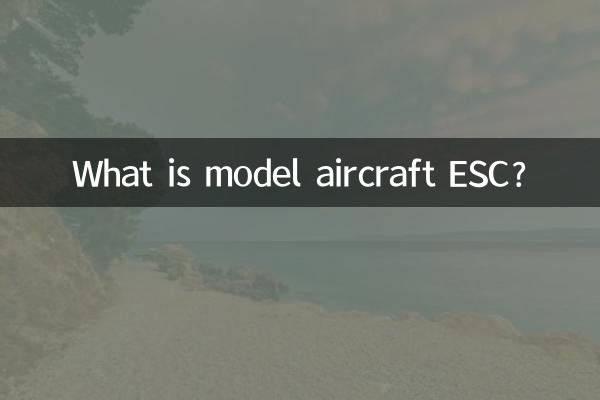What is model aircraft ESC?
The Electronic Speed Controller (ESC for short) is the core component of the aircraft model aircraft to control the motor speed. It is responsible for converting the battery's DC power into three-phase AC power and accurately adjusting the motor speed. In recent years, with the popularity of drones and model aircraft sports, the technology and performance of ESCs have also become a hot topic. This article will systematically introduce the functions, types and purchase points of model aircraft ESCs based on recent hot topics.
1. Core functions of model aircraft ESC

The main functions of model aircraft ESC include:
| Function | Description |
|---|---|
| power conversion | Convert battery DC power to three-phase AC power to drive brushless motors |
| Speed adjustment | Control the motor speed through PWM signal and respond to remote control commands |
| protection mechanism | Overvoltage, overcurrent, and overheating protection to prevent equipment damage |
2. Recent hot spots in model aircraft ESC technology (last 10 days)
According to the entire Internet search, the recent hotly discussed technology trends in the aircraft model circle include:
| Hotspot | Summary of contents | Discussion popularity |
|---|---|---|
| BLHeli_32 firmware update | Added support for bidirectional DShot protocol to improve response speed | high |
| AI smart ESC | Optimize motor efficiency and reduce energy consumption through machine learning | in |
| Ultra lightweight design | Aerial photography drones have a surge in demand for <15g micro ESCs | high |
3. Comparison of mainstream types of ESCs for model aircraft
Common ESCs on the market can be divided into three categories:
| Type | Applicable motor | Advantages and Disadvantages | Typical model |
|---|---|---|---|
| Brushed ESC | brushed motor | Low cost but poor efficiency | HobbyKing 10A |
| Brushless ESC | Brushless motor | High efficiency and needs to be used together | Flycolor 30A |
| High voltage ESC | 6S or above battery | Powerful, high price | T-Motor FLAME 60A |
4. Key parameters when purchasing an ESC
According to recent forum discussions, you need to focus on the following when purchasing:
| parameters | Description | Reference value |
|---|---|---|
| continuous current | Determine the power of the motor that can be driven | It is recommended to reserve 30% margin |
| input voltage | Match battery pack voltage | 2-6S (7.4-22.2V) |
| BEC output | Ability to power receiver | 5V/3A is better |
5. Recommended popular ESC models in 2023
Based on e-commerce platform sales and community reviews, recent popular models include:
| Ranking | Model | Features | reference price |
|---|---|---|---|
| 1 | Hobbywing XRotor 40A | Support 8S voltage, industrial grade waterproof | ¥320 |
| 2 | DYS BL30A | The king of cost performance, supports DShot1200 | ¥89 |
| 3 | T-Motor AM60A | Carbon fiber shell, race-grade response | ¥580 |
6. Frequently Asked Questions about ESC Use
According to recent discussions in technology forums, high-frequency issues focus on:
1.ESC is smoking: Mostly caused by excessive use or poor heat dissipation, the current matching needs to be checked.
2.Motor jitter: Usually the PWM frequency setting is wrong and needs to be recalibrated.
3.Unable to start: In 75% of cases, the throttle stroke is not calibrated and needs to be reset according to the instruction manual.
Conclusion
Model aircraft ESC serves as the "brain" of the power system, and its performance directly affects the flight experience. Recent technology development is rapidly evolving towards intelligence and lightweight. It is recommended that players choose adapted products based on actual needs and pay close attention to firmware updates. Correct use and maintenance of ESCs can significantly extend the life of the equipment and ensure flight safety.

check the details

check the details